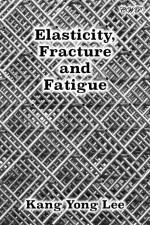von Kang Yong Lee
80,00 €
This book consists of three parts, elasticity, fracture, and fatigue. Part I deals with elasticity and consists of four chapters. Chapter 1 introduces tensor notation. To help students become familiar with the use of tensors, coordinate transformation, stress transformation, Kronecker delta, principal stress, etc., are written in both tensor and unabridged forms. In Chapter 2, three-dimensional governing equations in elasticity are introduced in tensor notation. It includes the equilibrium equation, Hooke's law, the relationship between strain and displacement, traction vector, compatibility equations and Navier's equilibrium equations. Chapter 3 deals with two-dimensional elasticity. The difference between the plane strain state and plane stress state is stated, and the governing equations of each state are obtained from three-dimensional governing equations. In Chapter 4, Airy stress functions in Cartesian and polar coordinates are introduced. The transformation method between the governing equations in Cartesian coordinate and polar coordinator is also explained. Part II treats fracture and consists of three chapters. In Chapter 5, the difference between notch and crack, the concept, physical meaning, and importance of stress intensity factor, and theoretical and experimental plastic zone shapes and sizes at the crack tip are explained. In Chapter 6, the standard test method of plane strain fracture toughness is introduced. The fracture mechanics design method to prevent yielding and fracture is also explained. Chapter 7 deals with fatigue fracture. The standard test method of fatigue crack growth rate is briefly introduced. The difference between Paris' law and Forman's law is explained. How to search why a crack was developed in the structure and how to make fatigue crack growth retard are also introduced. Part III deals with fatigue subject and has only one chapter, Chapter 8. It explains why fatigue data have scattering band, how to get a constant hysteresis loop from random fatigue load, how to get fatigue life, and how to get an approximation of S- N curves in metallic and non-metallic materials. For more details, please visit https://centralwestpublishing.com




